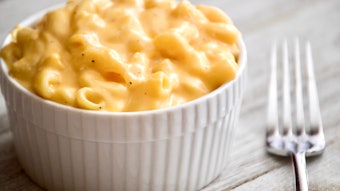Spa menus come in all shapes, sizes and styles. Some are booklets, some are pamphlets, some reflect a great image and some don’t. What is your menu saying about you? Is your menu effectively selling your treatments and products?
The main purpose of the menu is to pique interest, excite and compel the reader to make an appointment. The following seven do’s and don’ts will help differentiate your menu from others while positioning your spa in unique way.
1. Copy—Choose the right words
Don’t use the word “our” in your menu. Descriptions that focus on our spa, our facility, our therapists and so on … incorrectly emphasize the spa instead of the clients.
Do rewrite phrases or replace “our” with “your.” Remember, it’s all about your clients. Choosing the right copy is essential when writing your menu.
2. First impression
Don’t list your spa’s policy on the first page of the menu. Another common faux pas is when you open up the menu and immediately see lists of massages and facials.
Do make the first page or first paragraph a welcome statement. This should be a short paragraph welcoming clients to the spa and telling your story.
3. Use of images
Don’t forget to add images on your menu. Remember: You are selling client experiences.
Do choose images with people in them to capture emotions and tell your story.
4. Pricing
Don’t list prices next to your descriptions. If you are going to invest in a booklet menu with several pages, make sure you don’t include prices by the treatment descriptions.
Do include the price list as a card insert separate from the menu; this way, if you wish to update your prices, you won’t have to replace the entire menu. If your menu is a pamphlet, such as a trifold, then it is proper practice to show prices next to treatment descriptions. Make sure to place the price after the description, not before.
5. Treatment options
Don’t offer too many treatments; more does not mean better. Too many options will confuse clients and actually lower your reservation rate.
Do keep your menu simple by limiting the number of treatments, and organizing your treatment options by category and subcategory. This makes it easier to select treatments.
6. Menu structure
Don’t list à la carte options at the beginning of your menu. Frequently when spas offer packages, they list their packages in the back of the menu.
Do place your packages, programs and series in the front of the menu, and list à la carte after your packages and programs. This practice will help sell more packages, increasing your revenue. An ideal booklet menu structure is: cover, welcome, packages, programs, à la carte, spa boutique, how to spa and back cover.
7. Menu assessment
Don’t keep the same menu for a long period of time; more than one year without change is a mistake. If you have items on your menu that are not selling, remove and replace them with new options.
Do change your menu; it is very important. Keep your offerings fresh and up-to-date. Gather a group of your loyal clients who represent the majority of your target market to share new treatments or programs you are considering. Have them experience the new treatments, discuss price points and results, then make a good, well-researched decision. Your menu should be assessed and tweaked at least once per year.
Investing in a professional copywriter and designer is worth the money to portray a great image and to position your spa properly. There are consulting firms and instructional materials to help you plan, develop a great concept, and properly promote and sell your services. Remember: Your menu tells the world who you are.
Dori Soukup is the founder and CEO of InSPAration Management, a firm specializing in spa business development, advanced education and BizTools. During the past 10 years, she has contributed to the success of spa companies worldwide. Soukup is a published author who has been featured in national and international trade publications.










